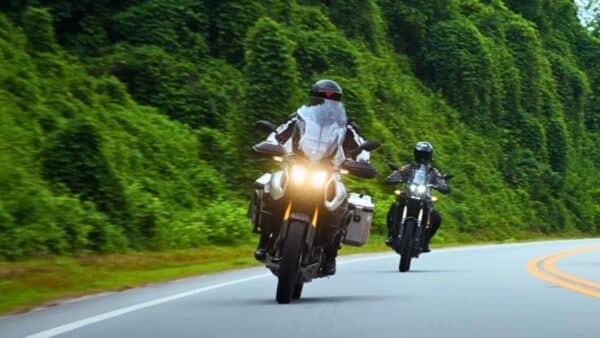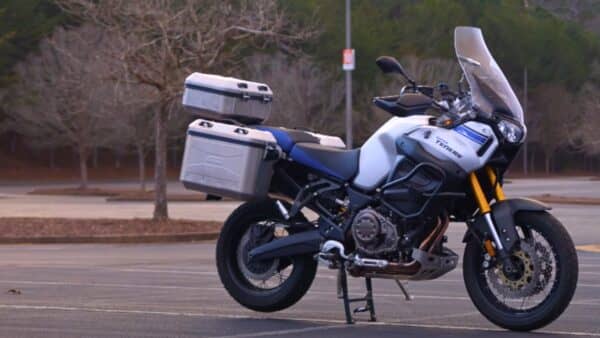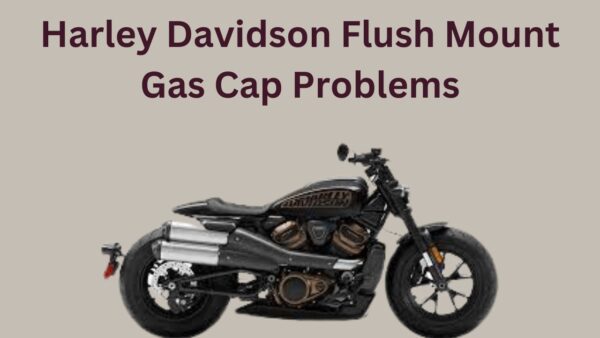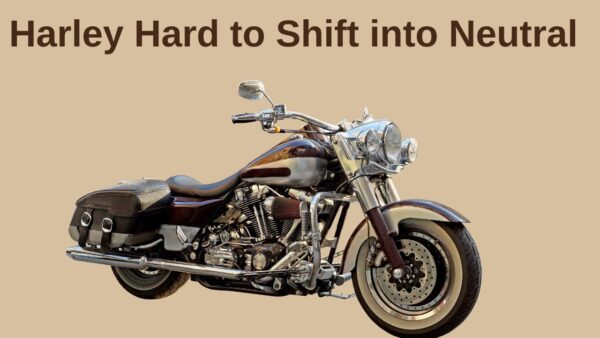The Yamaha Super Tenere is a motorcycle known for its durability and adventure capabilities, but like any vehicle, it’s not immune to problems.

In this guide, we’ll dive into:
- Some common issues that Super Tenere.
- Possible solution to each problem.
- Technical specification chart of Super Tenere.
Let’s begin!
Yamaha Super Tenere Problems
The Yamaha Super Tenere is known as an adventure touring motorcycle that comes equipped with 1199 cc liquid-cooled, 4-stroke, DOHC, and forward-inclined parallel 2-cylinder engine.
However many users and owners over time faced different issues with this bike and reported on different platforms and also reported to Yamaha.
Most of the problems are very simple and easy to fix on your own for example airbox temperature sensor failure, rattling noise, engine failure, and overheating issues.
On the other hand, this motorcycle also faces some serious issues that result in recalls for example electrical problems, clutch basket failure, and transmission problems.
1. Inaccurate Airbox Temperature Sensor
One common issue Yamaha Super Tenere owners may encounter is an inaccurate airbox temperature sensor.
This sensor is pivotal in providing data for the engine’s fuel management system to adjust the air-fuel mixture based on the temperature of the air entering the engine.

An inaccurate reading can lead to a lean or rich mixture, and results in reduced performance, stalling, or increased emissions.
To resolve this, you should inspect the sensor for any signs of damage or corrosion and ensure its connection to the wiring harness is secure.
You can also use a diagnostic tool to compare the airbox temperature reading with a known good thermometer to confirm the sensor’s performance.
If the sensor is found to be faulty, it should be replaced with an OEM part to ensure compatibility and reliability.
2. Recurrent Rattling Noise
Owners of pre-2014 Super Tenere ES models have reported excessive rattling noises, particularly from the clutch, skid plate, or exhaust heat shielding.
Sometimes loose hardware or a misaligned skid plate can create an unsettling rattle at certain RPMs.
To resolve this, a systematic check of all fasteners should be undertaken, ensuring they are tight and correctly seated.
If the noise persists, you’ve to add rubber washers or gasket material between the skid plate and the bike’s frame may dampen the vibration.
You should also inspect the exhaust heat shields for security and, if necessary, adjust them to prevent contact with other parts that might cause rattling.
3. Bike Shuts Off While Riding
Some riders have experienced their motorcycle suddenly cutting out, particularly at low speeds or while idling.
This could be due to an overheated engine, an electrical fault, a clogged fuel filter, or an issue with the bike’s side stand switch.
If your bike’s engine is overheated, you should ensure that the coolant levels are adequate and that the radiator is not blocked by debris.
Related: Yamaha R6 Motorcycle Not Starting
If an electrical fault is suspected, inspect all connections and fuses, and consider the health of the battery and the charging system.
Faulty wiring can sometimes be the culprit, requiring professional diagnosis and repair.
Sometimes clogged fuel filters would starve the engine of fuel, and lead to a shutdown. You can restore proper fuel flow by replacing the fuel filter.
4. Oil Consumption and Overheating
Some Yamaha Tenere riders have reported issues with excessive oil consumption and overheating.
This problem is particularly when riding in high-temperature conditions or during extended periods of heavy use.
To resolve the problem you should ensure consistent oil level checks, especially before long trips or riding in demanding conditions.
If the oil level is low, replenish it with the recommended type and grade of oil as specified in the owner’s manual.
Regularly check the engine coolant level and replace it according to the service manual’s schedule.
This helps prevent overheating and maintains optimal engine performance.
Also, ensure that nothing obstructs the flow of air to the radiator. Keep the radiator clean to aid in proper heat dissipation.
You should consider using high-quality, synthetic oil that can withstand higher temperatures and improve engine lubrication.
Lastly modify your riding style to avoid pushing the bike hard when temperatures soar, as this adds stress to the engine.
Instead, opt for a gentler approach during hot weather or heavy traffic conditions.
5. Electrical Issues Leading to Recall
A specific issue with the 2013 Yamaha Super Tenere involved a wiring problem that led to a recall.
The issue was related to the wiring splice on the Gen1 bikes, which could develop a resistive connection and cause problems like not returning to idle.
To resolve the problem, Yamaha has recommended that owners bring their motorcycles to authorized dealers for inspection.
The solution is checking the wiring harness for any signs of wear or damage and ensuring that all connections are secure.
If any faults are found, you should replace the damaged components with improved parts designed to resist wear and thermal damage better.
Moreover, you should clean and tighten the battery terminals to maintain a solid electrical connection.
6. Clutch Basket Failure
This problem is often due to the stress and strain of heavy usage, particularly in off-road conditions.
The effective solution to a failing clutch basket is you inspect and replace the affected components.
You should also inspect the clutch basket for signs of damage or wear. Look for notches or grooves that could impede the clutch plates’ movement.
If wear is significant, replace the clutch basket along with any worn plates or springs to ensure optimal performance and longevity.
Upgrade to an aftermarket basket which may offer improved durability over the original equipment manufacturer (OEM) parts.
Some aftermarket options feature reinforced construction and improved materials to resist wear.
Finally, adjust the riding style if necessary. Aggressive starts and hard shifting can contribute to quicker wear.
7. Transmission May Fail
It manifests as difficulty in gear shifting, unusual noises, or even the inability to engage gears.
The problem often stems from worn-out bearings, damaged gear teeth, or a defective clutch assembly.
To resolve the problem you should carefully inspect your bike and ensure there are no kinds of damaged parts.
If you find faulty components you should replace them with genuine Yamaha parts to maintain the integrity of the transmission system.
Yamaha Super Tenere Technical Specification Chart
| Specification | 2012 Model | 2015 Model | Twin-Sided Swing Arm | 2020 Model (1200ZE) |
| Engine Size | 1199 cc | 1199 cc | 1199 cc | 1199 cc |
| Engine Type | Parallel Twin, Four-stroke | Twin, Four-stroke | Twin, Four-stroke | Twin, Four-stroke |
| Power | – | – | 113.2 HP @ 7250 RPM | 112.0 HP @ 7250 RPM |
| Torque | – | – | 117.0 Nm @ 6000 RPM | 117.0 Nm @ 6000 RPM |
| Compression | 11.0:1 | 11.0:1 | 11.0:1 | 11.0:1 |
| Bore x Stroke | 98 x 79.5 mm | 98 x 79.5 mm | 98 x 79.5 mm | 98 x 79.5 mm |
| Fuel System | Injection, Fuel Injected | Injection, YCC-T | Injection, YCC-T | Injection, YCC-T |
| Cooling System | Liquid | Liquid | Liquid | Liquid |
| Transmission | 6-Speed, Shaft Drive | 6-Speed, Shaft Drive | 6-Speed, Shaft Drive | 6-Speed, Shaft Drive |
| Fuel Consumption | – | 5.47 L/100 km | 6.00 L/100 km | 5.47 L/100 km |
| Front Suspension | Inverted Fork | Telescopic Fork | Upside-down Telescopic Fork | 43mm Inverted Fork, Electronically Adjustable |
| Rear Suspension | Twin Sided Swing Arm | Monoshock | Monoshock | Swing Arm |
| Front Brake | Dual Hydraulic Disc | Double Disc, ABS | Double Disc, Hydraulic | Double Disc, ABS and UBS |
| Rear Brake | Hydraulic Disc | Single Disc, ABS | Single Disc, Hydraulic | Single Disc, ABS and UBS |
| Weight | 260.8 kg | 262.2 kg | 257 kg | 265 kg |
| Seat Height | 844.8 mm | 846 mm | 846 mm | 845 mm |
| Fuel Capacity | 22.7 Liters | 23.09 Liters | 23.09 Liters | 23 Liters |

Ahtsham Younas is a passionate blogger and content writer. He loves to ride motorcycles and learn the mechanical process behind the motorcycles.
He has been writing articles in the motorcycle industry since 2019 and has learned many things about motorbike niches.


